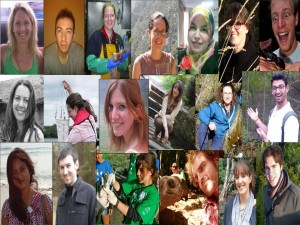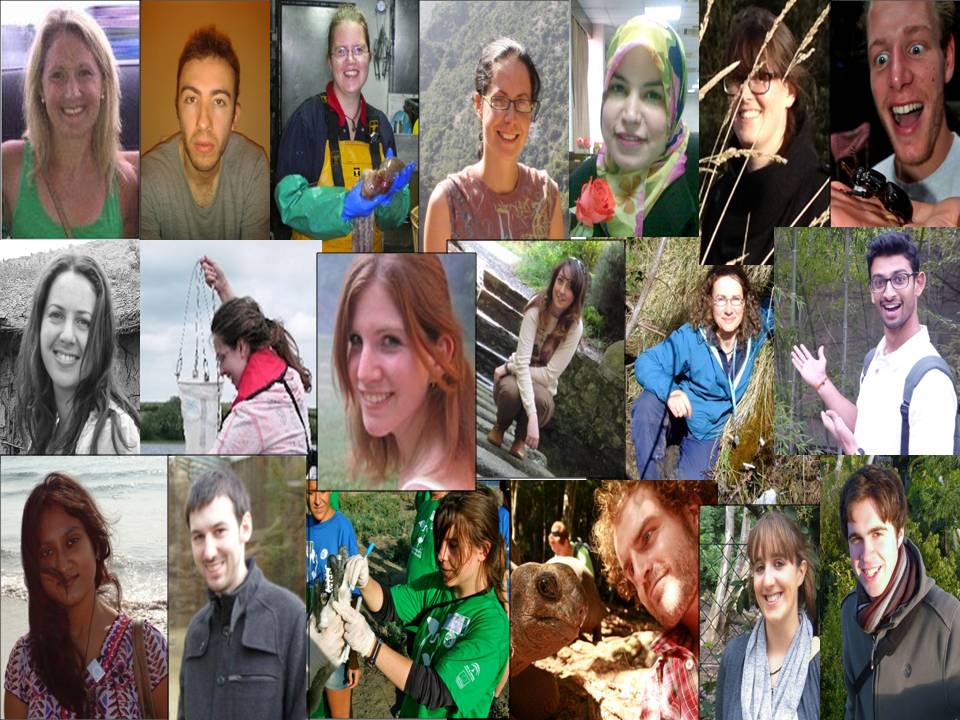
On the 15th and 16th April we had one of my favourite events at Trinity College Dublin: the annual School of Natural Sciences Postgraduate Symposium. Over the course of two days many of our PhD students presented their work to the School. We also had two amazing plenary talks from Dr Nick Isaac (CEH) and Professor Jennifer McElwain (UCD). For those of you who are interested in exactly what we work on here at EcoEvo@TCD, here are the abstracts from the PhD student presentations. Check out the TCD website for more details!
Rebecca Rolfe [@rolfera]: Identification of mechanosensitive genes during skeletal development: alteration of genes associated with cell signalling pathways.
Mechanical stimulation is important for correct formation of the skeleton. Mutant mouse embryos that develop with no skeletal muscle have altered mechanical stimulation resulting in specific defects in ossification and joint formation. We tested the hypothesis that mechanical stimuli influence the regulation of genes important in skeletal development by analysing the transcriptome of muscle-less and control skeletal tissue. We found 1,132 independent genes are differentially expressed with significant enrichment of genes associated with development and differentiation and cytoskeletal architecture. In particular, multiple components of the Wnt signalling pathway are affected. Further analysis will examine the mechanisms by which mechanical stimulation influences gene expression and differentiation, findings that are relevant to controlling differentiation in stem cell based regenerative therapies.
Adam Kane [@P1zPalu]: Scrounging Scavengers: Vultures acquire information on carcass location from scavenging eagles.
Vultures have an ecological role as obligate scavengers. In addition to being unable to kill prey for themselves we suggest that they are dependent on other species to locate food. Our analyses of bird arrival times at carcasses show that vultures join a carcass after discovery by raptors more often than expected by chance. We develop a game-theoretic model showing that such an interspecific producer-scrounger game is evolutionary stable when vultures are dominant to raptors in agonistic interactions over food. This hierarchy was confirmed at the carcass. Vulture populations are declining so our findings have implications for the conservation of the group.
Sarah Hearne [@SarahVHearne]: Intrinsic and extrinsic factors shape global marine diversity.
Intensifying anthropogenic pressures on ecosystems on a global scale have lead to an increased focus on the relationships between biodiversity and stability. Many studies of biodiversity have focussed on changes in diversity measures over relatively short timescales. However, there are also long-term changes in biodiversity which have been revealed through the fossil record. My project is examining global marine invertebrate diversity throughout the Phanerozoic Period (540my to present) to determine the causes of the cycles of extinction and origination over this time period. Using a new technique, convergent cross mapping, it has been shown that extinction and origination are both driven by diversity and each other, while extinction is also causally affected by temperature and origination by sea level.
Aoife O’Rourke: Spring foraging resources and the behaviour of pollinating insects IN grey dune ecosystems.
Grey dunes are a priority habitat under the EU Habitat Directive. They often contain creeping willow (Salix repens L., Salicaceae), which is suggested to be an important early season resource for bees and other obligate flower visitors. However, there is a paucity of empirical evidence to support this claim. We examine the springtime activity of obligate flower visitors in the grey dune ecosystem in relation to nectar sugar concentration and composition, relative abundance (%) of essential amino acids in pollen, and the abundance of floral units of S. repens and co-flowering plants in the environment. We also investigate the effect of S. repens presence on the abundance and species richness of solitary bees, bumblebees and hoverflies. Insect focal observation, pan-trapping and chemical analyses techniques were used to explore our research questions. Results will be presented and discussed in the context of managing habitat to increase resource availability for pollinators during spring.
Deirdre McClean [@deirdremcclean1]: The world in a bottle: Investigating stability and social transactions in microbial communities. *Best talk 1/2*
Understanding how perturbations affect the long term stability and dynamics of different systems has been a core challenge for ecological research. Identifying the mechanisms by which communities respond to and recover from different perturbations is of vital importance for assessing the impacts of anthropogenic pressures on the environment. Long term, multi-generational field studies are typically impractical, costly and confounded by a host of other ecological variables that need to be accounted for. Logistically feasible model systems are therefore needed in order to test more generalized ecological and evolutionary theory. Here we use experimental microcosms to examine the interactions among food web structure, habitat modification and social interactions in order to determine how these might moderate the effects of perturbations on stability.
Brian McGuinness: Escallonia spp. fungal pathogens. Sadly Brian missed the symposium but we still have his abstract…
A fungal disease affecting plants from the genus Escallonia has become a significant problem for both the nursery industry and for gardeners who use it as an ornamental boundary hedging. Development of lesions generally starts on older leaves throughout the plant usually causing some degree of defoliation ranging from mild to severe and sometimes resulting in plant death. We show how susceptibility of Escallonia to leaf spot disease varies across species and infra-specific taxa by in-situ assessment. No 100% genetic match currently exists for the organism causing the leaf spotting which is the same organism affecting plants in the U.K. Next steps include generating a full taxonomic description based on morphology and conducting next generation sequencing to identify any population differences that may exist.

